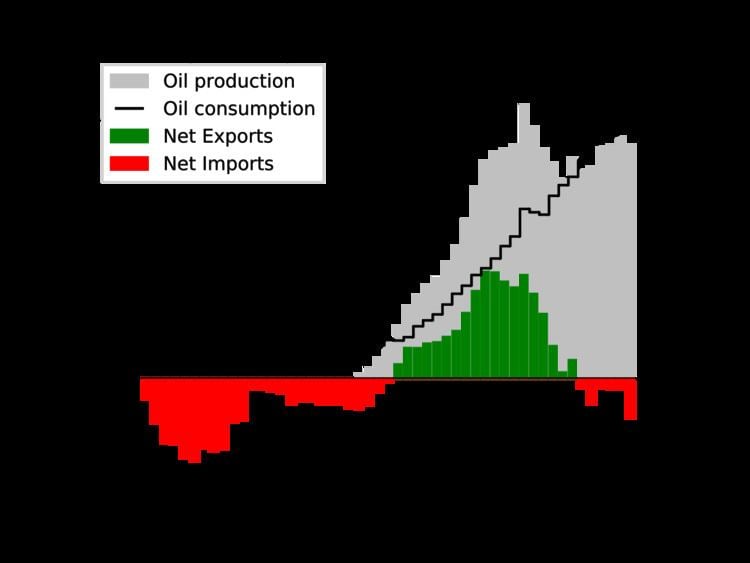 | ||
Energy in Vietnam describes energy and electricity production, consumption and import in Vietnam. Energy policy of Vietnam describes the energy policy in the politics of Vietnam more in detail.
Contents
In 2013, Vietnam planned to consume over 133.4 billion kWh of electricity, an increase of 11% from 2012. Vietnam will import 3.5 billion kWh from China, an increase of 1 billion kWh more than 2012. Hydroelectricity still contributes about 40% of total electricity generation, followed by thermal gas turbine with 33%, coal 22%, and the rest come from petroleum and import. The government is expecting to produce 5% of its energy from renewables by 2020.
History
In the late 1970s and early 1980s, fuel production increased at more than 10% annually. Coal output grew from 5.2 million tons in 1975 to 6 million tons in 1978 and fell to 5.3 million tons in 1980. According to official figures, 1985 coal production remained at, or somewhat below, the 1981 level of 6 million tons. Coal accounted for about two-thirds of energy consumption in the 1980s. Coal mining remained hampered by coordination and management problems at mining sites, incomplete rail connections to mines, equipment and materials shortages, and inadequate food and consumer goods for miners.
Electric power production, although handicapped by uncompleted projects and shortages of oil and spare parts, grew at an average of 8% per year in the late 1970s and early 1980s. Vietnamese statistics on the annual output of primary products showed that production of electricity increased by almost 60% to nearly 3.8 TWh from 1976 through 1978, then declined to around 3.7 TWh in 1980. By 1985, however, production of electricity had increased to 5.4 TWh. Energy-producing industries generally remained stagnant, however, which caused tremendous difficulties for the other sectors of the economy. Power output grew very slowly, and power shortages forced many factories to operate at only 45 to 50% of their capacity. The government planned that in the 1980s energy production would be tripled by the completion of three big Soviet-assisted projects: the 500-megawatt thermal plant at Pha Lai (now in Hải Dương Province); the 300-megawatt hydroelectric plant at Trị An, Đồng Nai Province, and the giant, 1,900-megawatt hydroelectric plant at Hòa Bình, Hòa Bình Province, which has been called the "Asian Aswan Dam."
Current status
Petroleum is the main source of commercial energy, followed by coal, which contributes about 25 percent of the country’s energy (excluding biomass). Vietnam’s oil reserves are presently estimated at 600 million tonnes. Oil production rose rapidly to 403,300 barrels per day (64,120 m3/d) in 2004, but output is believed to have peaked and is expected to decline gradually. Vietnam’s anthracite coal reserves are estimated at 3.7 billion tons. Coal production was almost 19 million tons in 2003, compared with 9.6 million tons in 1999. Vietnam’s potential natural gas reserves are 1.3 trillion cubic meters. In 2002 Vietnam brought ashore 2.26 billion cubic meters of natural gas. Hydroelectric power is another source of energy. In 2004 Vietnam began to build a nuclear power plant with Russian assistance.
Crude oil was Vietnam’s leading export until the late 2000s, when high-tech electrical manufactures emerged to become the biggest export market (by 2014, crude oil comprised only 5% of Vietnamese exports, compared to 20% of all exports in 1996). This is because Vietnamese crude oil is estimated to have peaked in 2004, when crude oil represented 22 percent of all export earnings. Petroleum exports are in the form of crude petroleum because Vietnam has a very limited refining capacity. Vietnam’s only operational refinery, a facility at Cát Lái near Ho Chi Minh City, has a capacity of only 800,000 barrels per day (130,000 m3/d). Several consortia have abandoned commitments to finance a 130-million-barrels-per-day (21,000,000 m3/d) facility at Dung Quat in central Vietnam. Refined petroleum accounted for 10.2 percent of total imports in 2002.
